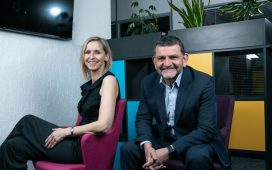
First Responders Give NIST Their Communications Tech Wish Lists
Our first responders have spoken. An extensive research project conducted by experts at the National Institute of Standards and Technology (NIST) reveals what our country’s police, fire, emergency medical and 911 dispatch responders think about the communications technology they use on a regular basis and how they would like developers to improve it in the future.
More than five years in the making, the Voices of First Responders project reflects the input of 7,182 respondents to a survey NIST conducted of first responders hailing from across the country, from large cities and suburbs to small towns and rural areas. The results of the study, the largest of its kind ever to investigate public safety personnel user experiences, provide a wealth of data intended to help developers of communications technology create more useful devices for the field.
“First responders are people who go to the scene with the goals of saving lives and protecting the public,” said Yee-Yin Choong, an industrial engineer at NIST. “We set out to understand this technology from their perspective, to find out what is working for them and what isn’t.”
While the results fill more than a dozen publications, some overarching messages stand out, including three interrelated requests that first responders made: Public safety communications technology should be trustworthy, be controllable and reduce user frustration.
“Our findings are aimed at the research and development community, but we are also trying to reach administrators who make purchases,” she said. “Technology needs to be trustworthy, and the users need autonomy over it. Our results indicate that if you focus on those things, the users will be happier.”
The team also distilled the study data into six guidelines for future technology development:
Improve current technology — more important than developing new technology is improving what first responders currently have.
Reduce unintended consequences — develop technology that does not interfere with or distract from first responders’ attention to their primary tasks.
Recognize that “one size does not fit all” — technology must accommodate public safety’s wide variety of needs, across disciplines, districts and contexts of use.
Minimize “technology for technology’s sake” — develop technology with and for first responders driven by their user characteristics, needs and contexts of use.
Lower product and service costs — develop technology at price points that departments find affordable and also scalable for widespread distribution.
Require usable technology — technology should make it easy for the user to do the right thing, hard to do the wrong thing, and easy to recover when the wrong thing happens.
The team began its investigation by interviewing about 200 first responders from across the country to gain a general understanding of how they used communications devices. From this information, the team developed a more detailed survey about particular pieces of technology — from radios and phones to laptops to the headsets and earpieces that call center dispatchers use — and details about them, such as frequency of use and the problems they presented.









